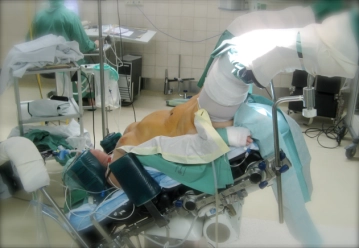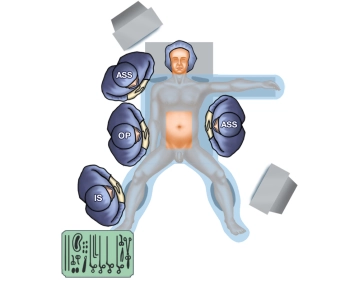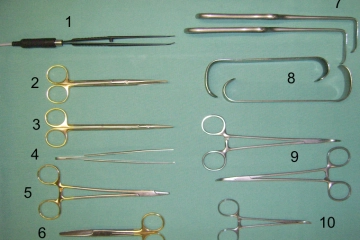According to the current S2k guideline on diverticular disease/diverticulitis by the German Society for Gastroenterology, Digestive and Metabolic Diseases (DGVS) and the German Society for General and Visceral Surgery (DGAV) from 2013, the following indications for a sigmoid resection exist:
- Acute uncomplicated diverticulitis (Type 1a and 1b) with no response to conservative treatment
- After successfully treated uncomplicated diverticulitis in patients with risk factors for recurrence and complications (e.g., transplantation, immunosuppression, chronic systemic glucocorticoids, collagen diseases, diabetes mellitus, chronic renal insufficiency), an indication for surgery may exist.
- Acute complicated diverticulitis (Type 2a and 2b) with no response to adequate conservative therapy (IV antibiotics, possibly interventional abscess drainage) -> surgery with deferred urgency
- Successfully treated complicated diverticulitis with macroperforation/abscess (Type 2b) -> surgery in the inflammation-free interval
- Patients with diverticulitis-related abscesses that are not amenable to interventional drainage or whose clinical condition does not respond to conservative therapy within 72 hours.
- Patients with free perforation and peritonitis in acute complicated diverticulitis (Type 2c) -> emergency surgery
- Post-diverticulitis stenosis with treatment-relevant obstruction of stool passage -> depending on clinical findings, urgent, early elective, or elective
- Fistula formations, especially with fistulas to the urinary tract (risk of urosepsis)
- Chronic recurrent uncomplicated diverticulitis (Type 3b) only after careful risk assessment depending on individual symptoms -> surgery in the inflammation-free interval
- Diverticular bleeding (Type 4)
In the case of a clearly localized diverticular bleeding, the corresponding intestinal segment should be resected. In the case of diverticular bleeding from the sigmoid colon, a standard sigmoid resection should be performed.
- Acute bleeding if not manageable endoscopically/interventionally
- Recurrent, clinically relevant bleeding after individual benefit-risk assessment
Laparoscopic or laparoscopically-assisted surgery is preferable to open resection. This also applies to complicated forms of diverticulitis and emergency situations, where at least a minimally invasive approach should be initiated. However, appropriate expertise is required.
The classification of diverticulitis/diverticular disease valid according to the current guidelines can be found here: Guideline Classification CDD



